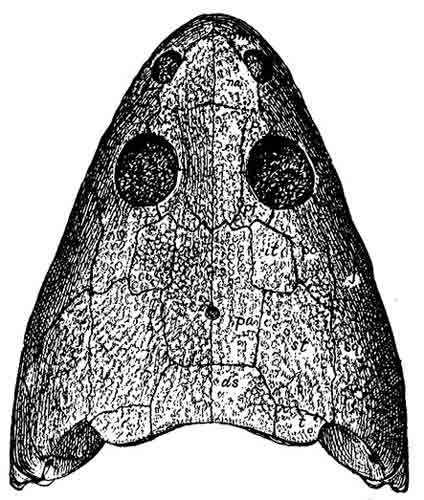Rare ! Fossil Claw Prehistoric Giant Amphibian mm 5 x 1 Trimerorhachis insignis Labyrinthodonts Extinct Temnospondyls Paleozoic Permian Collecting Paleontology Museum.
Remarkable fossil sample from the Permian lake deposits of Oklahoma (USA), representative collector's item difficult to find, of good quality, with evident anterior and posterior surface details and well-preserved extremity.
No restored at all. Only a piece, as in photos.
Trimerorhachis insignis is an extinct amphibian belonging to the order of Temnospondylia. He lived in the Lower Permian (about 290 million years ago) and his remains were found in the southwestern United States. During the first Permian, the area of New Mexico and Texas was a vast coastal plain that stretched from an ocean to the south to the northern highlands.
The type species of Trimerorhachis, T. insignis, was named by the American paleontologist Edward Drinker Cope in 1878. Cope named a second species from Texas, T. mesops, in 1896. The species T. rogersi (from 1955) and T. greggi ( nominated in 2013) are also from Texas and the species T. sandovalensis (since 1980) is from New Mexico.

This animal, which could reach a length of
one meter, had a relatively long body, with small legs protruding on the sides of the body and a long tail. The
skull, very large, almost triangular in shape, was elongated and flattened, with the eyes pointing upward near the front of the head. Some parts of the skeleton were poorly ossified and denoted a condition of
neoteny, or the preservation of larval characteristics in the adult stage. The presence of a
branchial apparatus indicates that Trimerorhachis had external gills in life, much like the modern axolotl. The Trimerorhachis body is also completely covered by small and very thin oval
osteoderms, more similar to fish scales than scales of reptiles, which overlap and can be up to 20 layers thick. These osteoderms act like a covering similar to the armor, especially around the tail. Their weight may have helped the Trimerorhachis to sink to the bottom of the lakes and rivers where it would feed.
Described for the first time in 1878 by Edward Drinker Cope, Trimerorhachis is considered a member of the suborder of
Dvinosauria, generally small and with bodies similar to those of salamanders. Studies on Trimerorhachis have determined that this animal was certainly more evolved than old-fashioned forms like Balanerpeton and Dendrerpeton, but it was more primitive than forms like Eryops and Dissorophus. Other scholars believe that the dvinosaurs may instead be considered more specialized, and it is possible that Trimerorhachis and his relatives evolved from terrestrial temnospondyls.
Trimerorhachis, in all likelihood, was an organism closely related to the aquatic environment, due to the lack of ossification of various parts of the skeleton, which would have rendered the life a discomfort for the animal mostly on land. The long toothed skull is compatible with a predator diet based on small vertebrates and invertebrates, which the Trimerorhachis captured with rapid movements of the body.
Other common animals that lived next to Trimerorhachis included lungfish and crossopterygians, the lepospondyl
Diplocaulus, and the large sail-backed synapsid
Dimetrodon.



